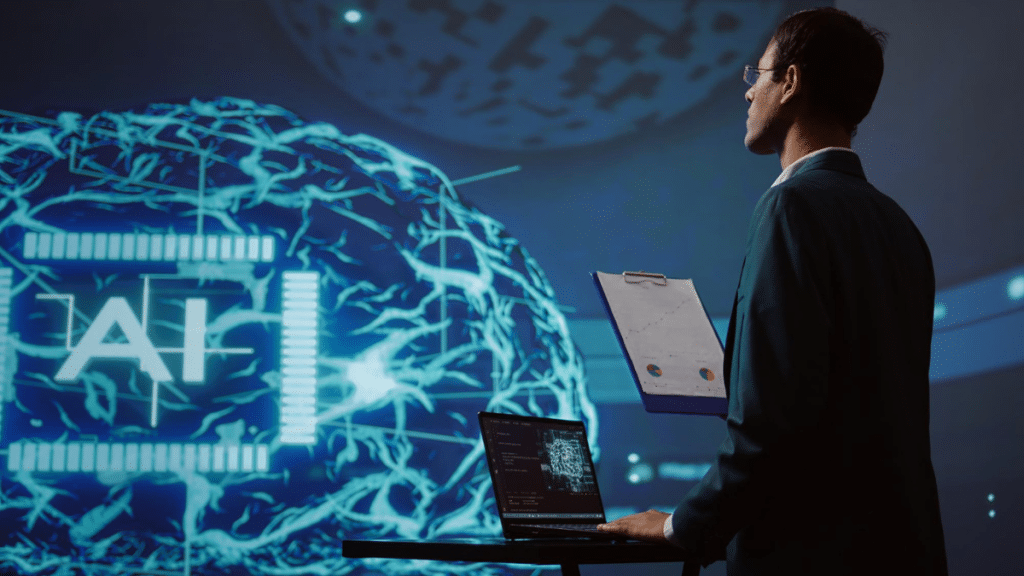Who wouldn’t like to predict the future and control what’s going to happen? Although that kind of “magic” doesn’t exist in the real world, what does exist is the power to predict through data, using AI and machine learning solutions.
Predictive analytics with AI is about using data to predict trends and events that may occur in the future, based on that data. It’s a very valuable tool that many companies are currently using to forecast possible scenarios or situations and be prepared for each case.
Stay reading as we continue to discuss how predictive analytics is influencing various industries and areas, as well as the impact of AI solutions in the context of today’s companies.
Basic flow of predictive analysis with AI
- Step 1: Data Collection
In any AI solution, the most important factor is always data quality, as this determines the quality of the tool’s expected results. In this stage, the information that will be used to perform the predictive analysis is collected. This could include sales data, customer behavior, market data, and other information.
- Step 2: Cleaning and preparation
After collecting the data, it undergoes a cleaning and preparation process to eliminate duplicate or corrupted data that will not contribute to the analysis, and the data is normalized. As mentioned above, this step is critical because the quality of the data determines the quality of the prediction.
- Step 3: Training the AI Model
In this step, the model learns all the patterns detected in the data to begin predictive analysis.
- Step 4: Model validation and testing
The AI model is evaluated using a dataset it has never seen before to measure its accuracy, error rate, and generalization ability.
- Step 5: Prediction generation
The most anticipated stage: predictions. In this step, the AI model is fully capable of generating predictions about future sales, demand, customer churn, market trends, everything the company wants to know based on the data entered.
How industries are leveraging AI and Predictive Analytics solutions
Although many industry leaders sometimes fail to see the applicability of AI solutions in their fields, the truth is that they apply to everything. For example, the agricultural industry is boosting production and resource utilization, using AI and data analytics to improve crop yields, minimize resource use, and address environmental challenges, according to an Open PR article citing InsightAce Analytic.
Additionally, the agricultural industry has embraced machine learning and predictive analytics to make more accurate and effective irrigation and pest management decisions.
Over the past five years, McDonald’s has delved deeper into the use of AI solutions to help its restaurants operate more efficiently and improve customer experiences. It has also helped them improve demand forecasting and optimize inventory planning, turning data into better business decisions, according to Procurement magazine.
When it comes to AI solutions, many companies don’t know where to start. A good option would be to seek AI consulting with an IT staff augmentation team that has the necessary skills to develop a predictive analytics solution tailored to their business.
Creating strategies for the future with Predictive Analytics and AI
The key in today’s business world is making the right decisions, and AI and predictive analytics hold the answer. Whether it’s financial, marketing, or HR decisions, having artificial intelligence software for this task is beneficial and can be a game-changer for your business. The most important thing is to have the right technological support to achieve success and not fail along the way.
